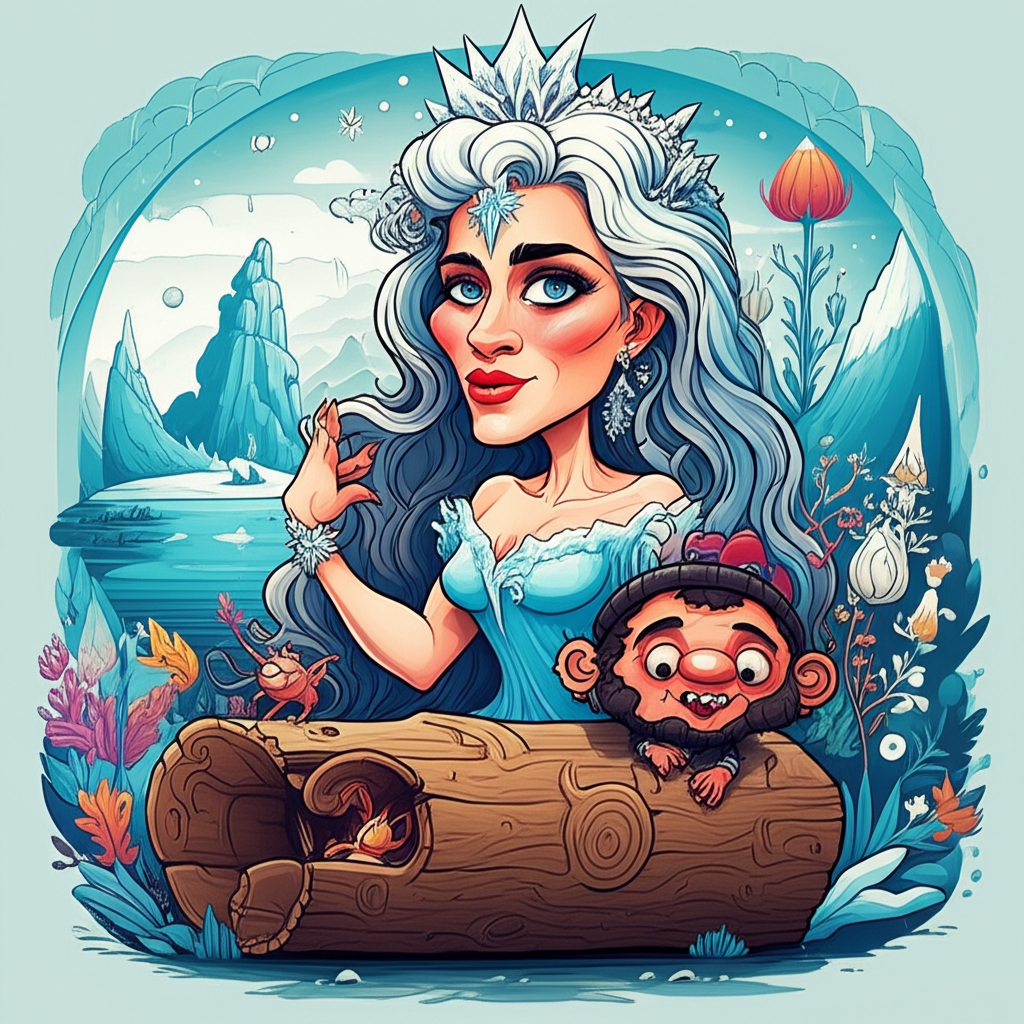
From the deep, shadowed forests and wind-swept steppes of Eastern Slavic lands, where ancient trees whispered secrets to the earth and the veil between worlds felt thin, emerges a tapestry of folklore rich with potent imagery and enduring archetypes. Within this vast cultural inheritance, the figure of Baba Yaga, the witch of the woods, and the mythical island of Buyan, a place of potent magic and spiritual significance, stand as cornerstones of ancient belief systems. These are not accounts of divine power or literal truth, but rather traditional narratives, woven by the hands of generations past to explain the unexplainable, to grapple with the mysteries of life and death, and to impart wisdom in a language of metaphor and symbol.
The cultural era that birthed these tales was one deeply intertwined with the rhythms of nature. In the lands of ancient Rus’, for instance, life was dictated by the turn of seasons, the fertility of the soil, and the unpredictable forces of the natural world. People lived in close proximity to the forests, which were seen not merely as sources of sustenance but as living entities, imbued with spirits and ancient powers. The world was understood as a place where the visible and invisible realms coexisted, where the spirits of ancestors, nature deities, and other supernatural beings played an active role in human affairs. This animistic worldview meant that every rustling leaf, every babbling brook, every towering mountain held a potential for both blessing and peril. It was a landscape where the ordinary could easily bleed into the extraordinary, and where the boundaries between the human and the divine, or the supernatural, were fluid and permeable.
At the heart of these narratives often lies Baba Yaga, a figure of immense complexity and primal force. She is not a singular, benevolent goddess, nor a purely malevolent demon. Instead, she embodies a liminal, untamed aspect of existence, often depicted as an ancient, fearsome woman dwelling deep within the forest, in a hut that stands on chicken legs, perpetually spinning and shifting. Her appearance is usually grotesque: a long, hooked nose, iron teeth, and a body so gaunt it seems to be made of bone. Her attributes are potent symbols of her dominion over both the wild and the uncanny. Her mortar and pestle, for instance, are not merely tools for grinding herbs; they represent her ability to traverse vast distances with supernatural speed, flying through the air with the pestle as a rudder and sweeping away her tracks with a broom. The iron fence surrounding her hut, often adorned with human skulls, speaks to a connection with the underworld and the cycles of life and death. Baba Yaga is a guardian of thresholds, a dispenser of both trials and boons, and a force that demands respect and careful navigation. She represents the raw, untamed power of nature, the wisdom of the crone, and the fear of the unknown that resides in the deepest parts of the wilderness.
The mythical island of Buyan, conversely, serves as a celestial and earthly nexus, a locus of ultimate power and hidden knowledge. It is a place often described as existing at the edge of the world, beyond the furthest seas, bathed in perpetual light or shrouded in an ethereal mist. Buyan is a land where the sun rises and sets, where the most powerful magic is born, and where the celestial and terrestrial realms converge. It is said to be guarded by formidable beings and accessible only to those who prove themselves worthy through arduous quests or profound spiritual insight. Within Buyan, the most potent elements of existence are said to reside: the celestial fire, the waters of life and death, and the sacred Oak or Ash tree, which connects the heavens, the earth, and the underworld. This island is a symbolic representation of the primordial creation, the source of all life and knowledge, and a place where the cosmic order is maintained.
The narrative threads connecting Baba Yaga and Buyan often manifest in tales of heroes undertaking perilous journeys. A young protagonist, often an orphan or someone facing immense hardship, might be tasked by a wise elder or compelled by circumstance to seek out Baba Yaga. The encounter is rarely straightforward. Baba Yaga might test the hero with riddles, impossible tasks, or even attempt to devour them. However, if the hero displays courage, wit, and respect, Baba Yaga might, grudgingly, offer guidance or a magical artifact, often pointing them towards the mythical island of Buyan. This journey to Buyan is the ultimate quest, a pilgrimage to the heart of existence. Here, the hero might confront the very essence of life and death, gain profound wisdom, or acquire the power needed to overcome their challenges. The stories often depict the hero returning from Buyan transformed, armed with knowledge and strength, having navigated the dangerous territories represented by Baba Yaga and the mythical realms of the island. These narratives are not simply adventure stories; they are allegorical explorations of the human journey, from ignorance to understanding, from vulnerability to resilience.
The symbolism embedded within these myths is multifaceted. Baba Yaga, as mentioned, represents the dualistic nature of the wild: its potential for destruction and its capacity for nurturing growth. She embodies the wisdom that comes from confronting primal fears and the understanding that life and death are inextricably linked. Her hut on chicken legs can be seen as a symbol of the earth itself, constantly in motion, yet rooted. The island of Buyan, on the other hand, is a potent symbol of cosmic order, the source of creation, and the ultimate repository of spiritual truth. The Oak or Ash tree connecting its realms signifies the interconnectedness of all things. The quests undertaken by heroes to reach Buyan represent the spiritual journey of self-discovery, the pursuit of enlightenment, and the arduous path to achieving inner balance and mastery. These stories, therefore, served as a cultural blueprint, guiding individuals through the complexities of life, offering frameworks for understanding the natural world, and instilling moral values through relatable, albeit fantastical, scenarios.
In the modern world, these ancient echoes continue to resonate. Baba Yaga, with her unsettling charm and formidable presence, has become a beloved figure in literature, film, and video games. She is often reinterpreted as a complex anti-hero, a guardian of forgotten lore, or a powerful sorceress whose motives are not always clear. Her image evokes a sense of primal magic and the enduring allure of the wild. Similarly, the concept of Buyan, as a mystical island at the edge of the world, a place of hidden wonders and profound secrets, continues to fuel the imaginations of storytellers and artists. These myths are studied in cultural anthropology and folklore departments, offering insights into the psychological landscapes and worldview of the people who conceived them. They serve as a testament to the enduring power of human imagination and the universal need to create meaning through narrative.
It is crucial to reiterate that these are traditional stories, born from the cultural milieu of ancient peoples. They are a testament to their worldview and their attempts to understand the world around them. As Muslims, we recognize that only Allah (God) is the true Creator and Sustainer of all existence. He is the ultimate source of all power and knowledge. These narratives, therefore, are viewed through the lens of cultural heritage and storytelling tradition, appreciated for their imaginative depth and the wisdom they offer regarding the human condition, rather than as accounts of divine beings or literal truths. The echoes of Morana, Baba Yaga, and Buyan serve as a reminder of the rich tapestry of human storytelling, a tradition that continues to inspire and captivate, connecting us to the past through the power of imagination and the enduring legacy of our ancestors’ narratives.





